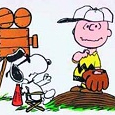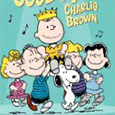Lee Mendelson Productions (1963), Charles M. Schulz Museum (2005), 1 disc, 26 mins; 1.33:1 original full frame ratio, Dolby Digital Mono, Not Rated, Retail: $14.95
Storyboard:
This never-aired vintage documentary examines the popularity of Charlie Brown and the methods of his creator, Charles Schulz.
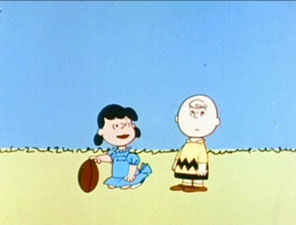
The Sweatbox Review:
Charles Schulz reportedly hated the name “Peanuts,” a title for his newspaper comic strip which had been cooked up by someone at the newspaper syndicate, but it didn’t stop it from becoming the most popular strip in the world. In fact, Peanuts (slang for “children”) was one of the greatest merchandizing endeavors in the history of comic strips. The 1930s Golden Age of newspaper comics had seen phenomenal popularity of strips like Dick Tracy and Li’l Abner, with a tremendous amount of licensed items produced and the cartoonists becoming quite rich and famous; but by the time the 1963 came around, a new champ had emerged, and in fact had taken over in such grand fashion that such success is likely to never come again from the newspaper comic page. Peanuts was HUGE. The comic strip was in well over two thousand newspapers worldwide, and merchandise was everywhere—- everything from books to toys to household items. And at the center of the empire was this quiet man named Charles Schulz.

During the early height of Peanuts’ popularity, Lee Mendelson had co-produced a television documentary about baseball hero Willie Mays, and chose his next subject to be the world’s worst (and yet most famous) baseball player, Charlie Brown. Mendelson lived not far from Schulz, who had moved to the San Francisco area from Minnesota. Amazingly, the round-headed kid’s creator was easily found in the phone book, and upon calling him Mendelson learned that Schulz, a sports fan, had seen and enjoyed the Mays documentary. Mendelson proceeded to shoot the documentary, capturing terrific footage of the man who was better known for his drawings than his face. The documentary would also feature some of the earliest Peanuts animation, including the first animated takes of a number of classic Charlie Brown moments.
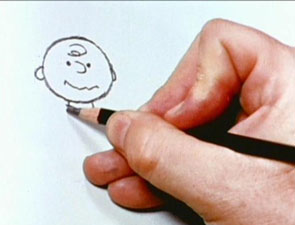
The documentary is gold right from the start. It opens with Schulz drawing Charlie Brown, explaining how he really lets Charlie Brown “have it” after a particularly bad night of bowling or similar personal failure that drives his production of the strip. Schulz does not come off as morose, however. He chides himself gently and with good humor, and it is apparent that he understands that the popularity of Peanuts comes not because of his own failures, but because of how everyone can relate to failure. Imperfection is simply a part of the human condition, and Schulz exploits it with great charm and empathy.

The first animation in this documentary oddly shows Charlie Brown attempting to play the piano, before being run off by the other kids. Schroeder takes over on the piano, of course, and the kids then proceed to sing about the lovable loser. When narrator Don Sherwood goes on to describe the characters from the strip, animation shows such classic set-ups as Lucy holding the ball for Charlie Brown, Snoopy acting like a vulture before attacking Linus and his blanket, and so forth. And over it all is the music of Vince Guaraldi, the San Francisco jazz pianist whose music would forever be linked to Peanuts. Mendelson had been referred to Guaraldi by other musicians in the Bay area while searching for someone to handle the documentary, and then Mendelson happened to hear Guaraldi’s composition Cast Your Fate To The Wind over the radio while crossing the Golden Gate Bridge. It turned out that Guaraldi was a big fan of the strip, and he always read it with his kids, who were then about the age of the Peanuts gang. Guaraldi was more than enthusiastic about doing the music for the documentary, and almost immediately came up with his signature piece Linus And Lucy. That single piece of music, created in a burst of gifted inspiration, would define his career and his life— not to mention the world of Schulz’s Peanuts.

The documentary proceeds to show the effect that Peanuts had on the world back in the Sixties. Parade floats, newspaper clippings (one denouncing Lucy as a fascist!)… and of course the publishing phenomenon Happiness Is A Warm Puppy, which was at the time the United States’ best-selling non-fiction title. We also get to see Schulz in his private life, driving his kids to school, and at work. Rare footage is seen of him working at his drawing board, showing both nervousness and joy, describing how he gets his inspiration for the strip as well as his working methods. He also talks about the pressures of doing a daily strip and a Sunday page, and how he believes in professionalism (the strip was a solo project, with no missed deadlines, for about fifty years). When he takes a break from drawing, he answers fan letters from children with his secretary. In one humorous answer to a letter, after a boy had promised to go to a monastery if Charlie Brown didn’t catch a break soon, Schulz advises the child to make reservations there. Other insights are given during interviews with Schulz, such as how he expects that Linus would grow up to be the most successful adult, while Charlie Brown will always be a Charlie Brown, because people just don’t outgrow that. Before the documentary comes to a close, we see footage from Charlie Brown Day at Candlestick Park, where it naturally rained during the pre-game presentation to Schulz, before becoming sunny in time for the game.
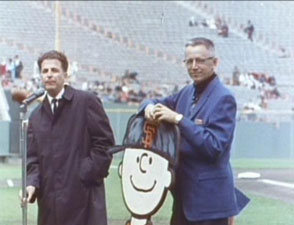
Bill Melendez, a veteran of just about every major animation studio of the past decade or two, directed the animation for the documentary. The very first Peanuts animation had already been done by him for a series of Ford Falcon TV commercials, which saw many ads produced over the course of several years. He was a natural for the documentary, though the credits simply list “Playhouse Pictures” as doing the animation. Melendez, of course, went on to be involved (along with Mendelson) with the dozens of Charlie Brown TV specials and movies that followed, starting with A Charlie Brown Christmas in 1965. That special, of course, was also the television public’s first glimpse of Charlie Brown alongside Guaraldi music, and the rest is history. Obviously, this little documentary that never aired was of massive importance in determining the future of Peanuts in animation. And it’s great to finally be able to see it. It should be noted that parts of the documentary were used in 1969 for a TV special called Charlie Brown And Charles Schulz, as well as 2001’s The Making Of A Charlie Brown Christmas, but the DVD that is the subject of this review is the only way to see the documentary as originally produced.
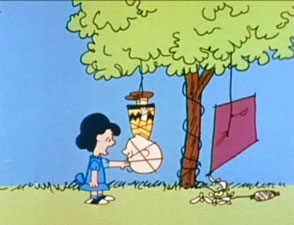
Is This Thing Loaded?
The disc immediately loads to a simple menu (with lots of video noise) that offers only the main feature. Unfortunately, no supplementary materials accompany the documentary on disc, but I will give a point for the case’s insert (see below).
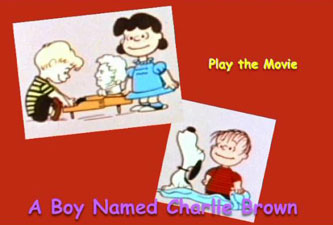
Case Study:
Standard keepcase. Inside the case, there is a one-page insert with a short essay by documentary producer Lee Mendelson entitled Charlie Brown And Willie Mays. This serves as a perfect introduction to the DVD, explaining the genesis of the project and what happened to the footage shot for the documentary.
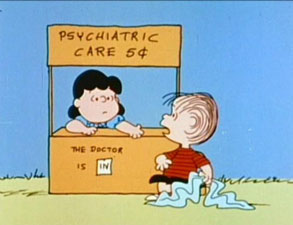
Ink And Paint:
The documentary footage is looking pretty scratchy. There are physical and video artifacts galore, including dust, scratches, and other wear and tear. For a documentary never before shown, the source materials certainly look well used. The print also is very faded. The actual compression work is fine, however; this is just a case of the source material (maybe a videotape?) being in poor shape. On the other hand, it does give one a true feeling of seeing something special, something that “Uncle Lee” found in his attic to share with the family, a long-lost memento of utter coolness that transcends any consideration of just how good it may look.
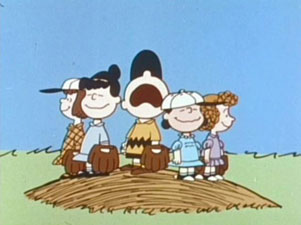
Scratch Tracks:
The sound is about as scratchy as the video. Obviously, this 1963 production is in mono, and has about as much hiss and echo that one would expect, though not all that bad. The audio is a tad harsh, but again we’re talking about a relic whose charm is only enhanced by showing its age.
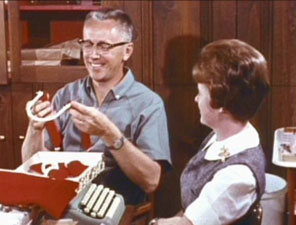
Final Cut:
If you thought you had every Peanuts DVD you wanted, you may need to reconsider. This half-hour documentary is a treasure trove of vintage footage of the creator of Peanuts, produced by the producer of the TV specials, with animation by the specials’ animation director, and music by the immortal Vince Guaraldi. I don’t know what else I would have to say to convince you that this is a real gem. The only source for this is at the Charles M. Schulz Museum, but if you don’t live in California you can simply use the link provided below. Offered at a reasonable price point, this is recommended for all fans of good ol’ Charlie Brown.
 | ||
 |






